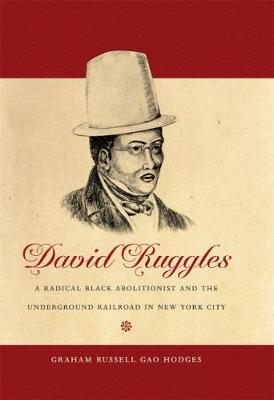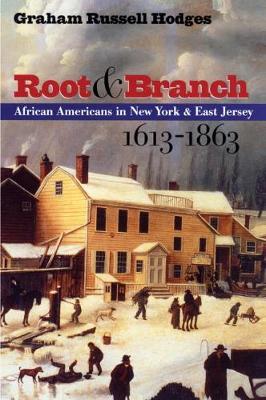The John Hope Franklin Series in African American History and Culture
2 total works
This is the first biography of a pioneering activist, mentor to Frederick Douglass and Sojourner Truth. David Ruggles (1810-1849) was of one of the most heroic - and has been one of the most often overlooked - figures of the early abolitionist movement in America. Graham Russell Gao Hodges provides the first biography of this African American activist, writer, publisher, and hydrotherapist who secured liberty for more than six hundred former bond people, the most famous of whom was Frederick Douglass. A forceful, courageous voice for black freedom, Ruggles mentored Douglass, Sojourner Truth, and William Cooper Nell in the skills of antislavery activism. As a founder of the New York Committee of Vigilance, he advocated a 'practical abolitionism' that included civil disobedience and self-defense in order to preserve the rights of self-emancipated enslaved people and to protect free blacks from kidnappers who would sell them into slavery in the South. Hodges' narrative places Ruggles in the fractious politics and society of New York, where he moved among the highest ranks of state leaders and spoke up for common black New Yorkers.
His work on the Committee of Vigilance inspired many upstate New York and New England whites, who allied with him to form a network that became the Underground Railroad. Hodges' portrait of David Ruggles establishes the abolitionist as an essential link between disparate groups - male and female, black and white, clerical and secular, elite and rank-and-file - recasting the history of antebellum abolitionism as a more integrated and cohesive movement than is often portrayed.
His work on the Committee of Vigilance inspired many upstate New York and New England whites, who allied with him to form a network that became the Underground Railroad. Hodges' portrait of David Ruggles establishes the abolitionist as an essential link between disparate groups - male and female, black and white, clerical and secular, elite and rank-and-file - recasting the history of antebellum abolitionism as a more integrated and cohesive movement than is often portrayed.
In this remarkable book, Graham Hodges presents a comprehensive history of African Americans in New York City and its rural environs from the arrival of the first African--a sailor marooned on Manhattan Island in 1613--to the bloody Draft Riots of 1863. Throughout, he explores the intertwined themes of freedom and servitude, city and countryside, and work, religion, and resistance that shaped black life in the region through two and a half centuries. Hodges chronicles the lives of the first free black settlers in the Dutch-ruled city, the gradual slide into enslavement after the British takeover, the fierce era of slavery, and the painfully slow process of emancipation. He pays particular attention to the black religious experience in all its complexity and to the vibrant slave culture that was shaped on the streets and in the taverns. Together, Hodges shows, these two potent forces helped fuel the long and arduous pilgrimage to liberty. |A comprehensive history of African Americans in New York City and East Jersey from 1613-1863. The author pays particular attention to the black religious experience and to the vibrant slave culture shaped on the streets and shows that both fueled the long pilgrimage to freedom.

